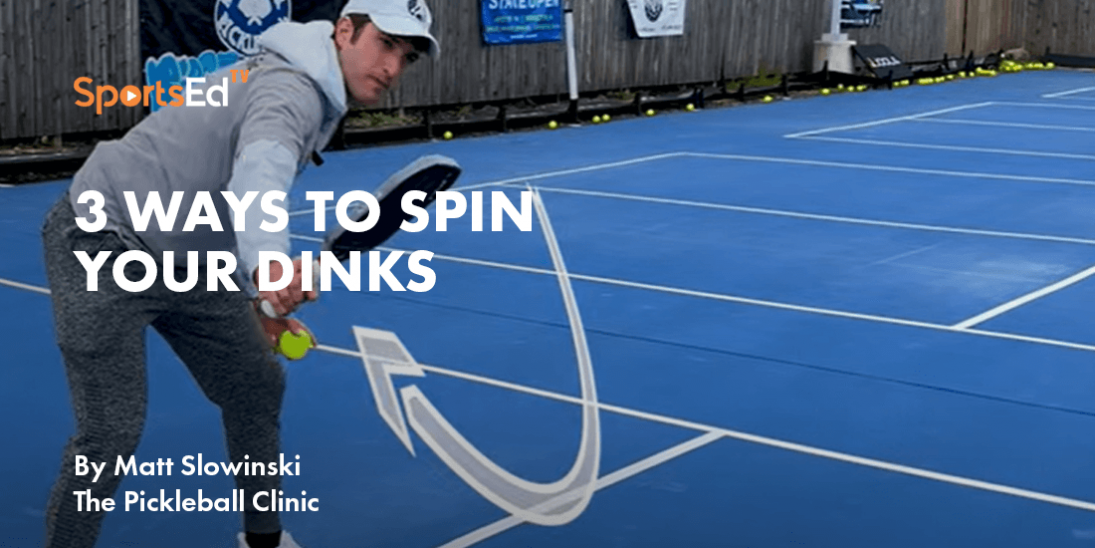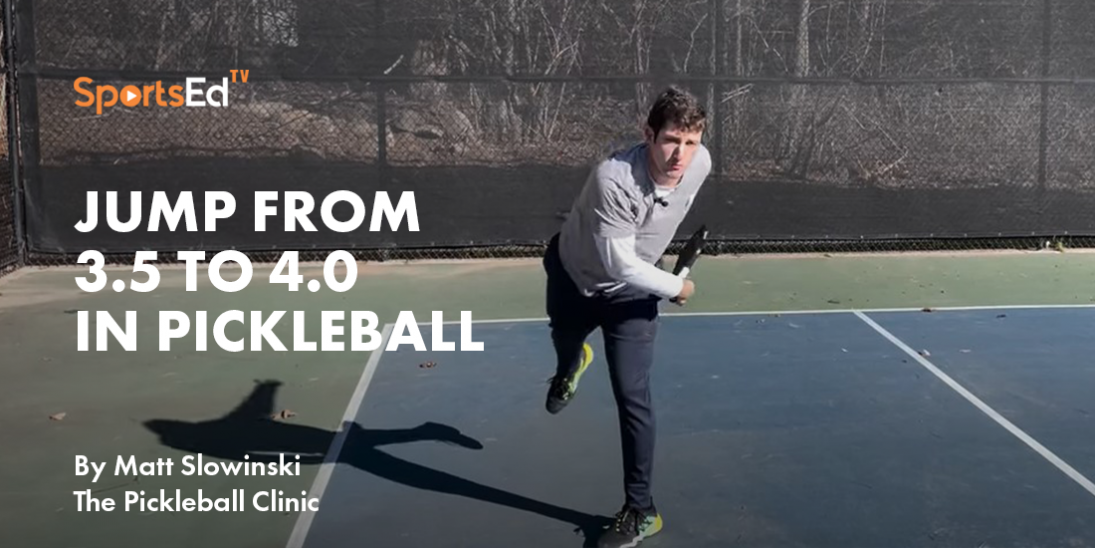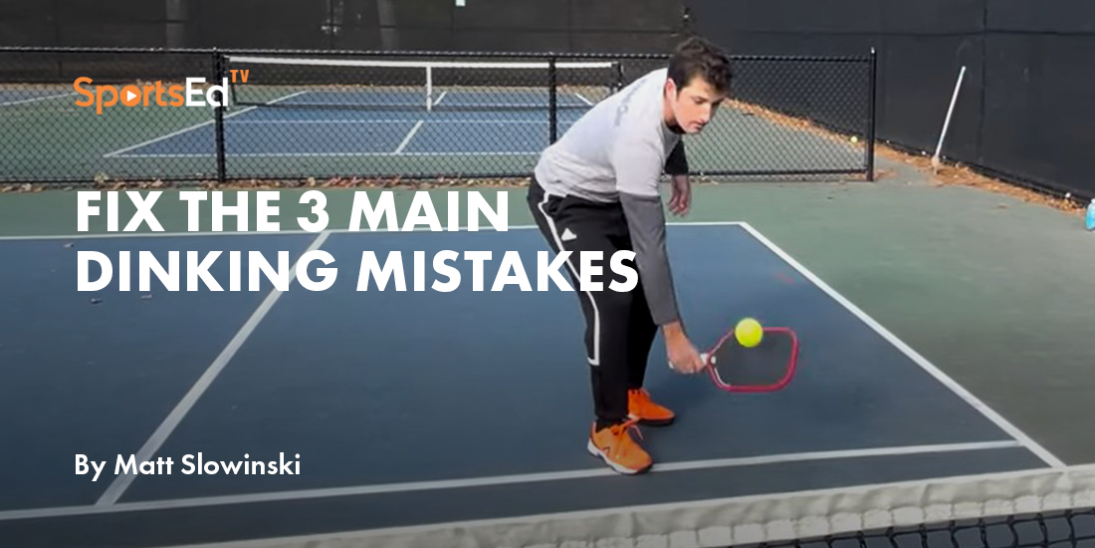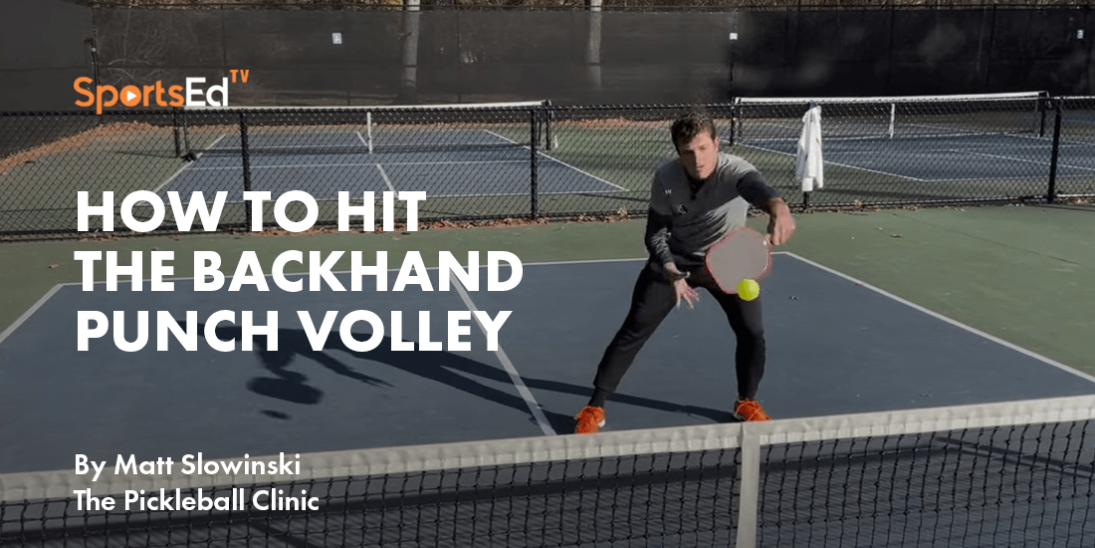Pickleball
Welcome and thanks for visiting...

The Forehand Drive in Pickleball: How, When, and Why

If you aim to up your pickleball game, mastering the forehand drive is an essential skill to develop. The forehand drive can significantly enhance your ability to score points, transition effectively to the net, and maintain control of the pace of play. Whether you're a beginner or an advanced player, understanding the technical nuances of the forehand drive will open up new possibilities on the court. In this detailed guide, we’ll explore everything you need to know about the forehand drive, focusing on how to execute it with precision, when to use it for maximum advantage, and why it's such a critical component of a winning strategy.
The Importance of the Forehand Drive
Pickleball, at its core, is a game of timing and positioning. While power and finesse certainly play roles, knowing how to control your shots—particularly the forehand drive—effectively can mean the difference between winning and losing. Unlike other shots like the drop or dink, the forehand drive is an offensive weapon that allows you to apply pressure on your opponent, forcing them to make mistakes or leave openings for you to capitalize on.
When executed properly, the forehand drive can help you score easy points, particularly off weak returns. It also serves as a bridge to more advanced shots, enabling you to take control of the rally and transition smoothly to the net. But it's not just about hitting hard—it's about hitting smart. Let’s break down the key components of the forehand drive so you can start using it to dominate your matches.
How to Hit a Forehand Drive: A Step-by-Step Breakdown
The forehand drive is not just about brute force; it’s about preparation, balance, timing, and executing the right mechanics. Let’s look at the essential steps involved in hitting a successful forehand drive.
1. Preparation: The Unit Turn and Push-Up Position
The foundation of any great forehand drive is preparation. The earlier and more effectively you prepare, the better your shot will be. Your preparation begins with what’s called the "unit turn." This refers to turning your body and arms as one cohesive unit, setting up for the shot well before the ball reaches your side of the court.
As you execute the unit turn, ensure your arms are spaced evenly, about shoulder-width apart. This will help maintain balance and set you up for an efficient swing. To help with this balance, adopt what is known as the "push-up position." Imagine you’re about to perform a push-up: both arms are extended out in front of you, palms facing away from your body. For your non-paddle arm, this keeps you centered and stable, while for your paddle arm, it ensures that you maintain balance during the swing.
Many players make the mistake of dropping their non-dominant arm during preparation, which causes a loss of balance and can negatively impact their shot. Keeping both arms in the push-up position’ll maintain your stability throughout the shot. This technique helps with balance and ensures that you’re coiling your body for maximum power when it comes time to uncoil and make contact with the ball.
2. Moving into the Ball: Closed Stance for Forward Momentum
Once you’ve completed the unit turn, your next step is to move into the ball with a closed stance. A closed stance is when your feet are positioned perpendicular to the net, with your body facing the sideline, not the net. This allows you to generate forward momentum, which is crucial for a powerful drive.
Your weight naturally shifts toward the ball when you step forward into a closed stance. This forward momentum gives your shot power and control, allowing you to push through the ball rather than brush past it. While sometimes helpful in adding spin, an open stance won’t give you the same driving power because your weight won’t transfer as effectively.
Think of it this way: in a closed stance, your energy is directed into the ball and toward the net, helping you to drive forward and gain positioning closer to the net after the shot. With an open stance, the swing can become more rotational, which limits the forward push of the ball and makes it harder to follow up with an aggressive shot or move up to the net.
3. The Swing: Generating Topspin and Maintaining Balance
Generating topspin is a key component of the forehand drive because it helps the ball dip over the net while maintaining control. The topspin also makes the ball more difficult for your opponent to return, as it dips lower and forces them to lift it back up.
To create topspin, bend your knees and drop your paddle below the ball’s level. Your swing should follow a low-to-high motion, with the paddle starting low and finishing high. This upward motion ensures that you’re getting underneath the ball and imparting the spin needed to make it dip as it crosses the net.
Keep your non-dominant arm up in the air throughout the swing, maintaining that push-up position we discussed earlier. This helps you stay balanced so you can swing fluidly without falling off to one side. Balance is essential for consistency, and keeping your non-dominant arm engaged helps with this.
One of the most important aspects of the swing is making contact with the ball out in front of your body, within your "strike zone." The strike zone is the area between your knees and your waist, where you can generate the most power and control. Hitting the ball too high or too low will result in weaker shots or shots that pop up, giving your opponent an easy opportunity to counter.
4. Hitting in the Strike Zone: Timing the Bounce
Timing is crucial when it comes to hitting your forehand drive. You want to make contact with the ball at the peak of its bounce, which is when the ball has stopped rising and is about to start falling. This ensures that you’re hitting the ball at its most stable point, allowing for better control and power.
The challenge with timing your shot comes from the ball’s motion. Hitting the ball while it’s still rising or after it has started to drop makes the shot more difficult, as the ball is either accelerating or decelerating. By waiting for the peak of the bounce, you eliminate much of this motion, making it easier to connect solidly with the ball.
Unlike tennis, where the ball may bounce much higher, and players often hit it while it’s still on the rise, pickleball’s wiffle ball doesn’t bounce as high. This means that the peak of the bounce is typically around your waist level, which is why it's essential to time your drive properly to make contact in the optimal strike zone.
When to Hit the Forehand Drive: Maximizing Effectiveness
Knowing when to execute a forehand drive is just as important as knowing how to hit it. Timing your drive correctly will give you the best chance of winning the point or setting yourself up for success in subsequent shots.
1. Look for High Returns
The most critical factor in determining when to hit a forehand drive is the height of the ball. Ideally, you want to drive balls that bounce high enough to reach your strike zone (waist level). If the ball is too low, you won’t be able to generate enough power, and your shot will likely pop up, giving your opponent an easy opportunity to attack.
A good rule of thumb is to drive only high returns. When your opponent returns the ball high and it bounces up into your strike zone, you have a prime opportunity to step into the shot and drive it with maximum power and topspin.
2. Drive with Forward Momentum
Another crucial factor in determining when to drive is your body position. You should only attempt a forehand drive when your weight is moving forward. If you’re falling backward or your weight is shifting away from the ball, it’s better to hit a different shot.
Driving while moving backward opens up the paddle face, causing the ball to pop up and giving your opponent an easy put-away shot. Instead, make sure your momentum is moving toward the net so you can hit the ball with authority and follow up with a well-placed shot.
3. Take Advantage of Slice Returns
Slice returns from your opponent present an excellent opportunity to drive the ball. When your opponent slices the ball, it creates a backward spin that complements the topspin of your drive. The combination of these spins causes the ball to dip quickly after it crosses the net, making it harder for your opponent to return.
Even if the slice return is slightly lower than a ball you’d normally drive, it can still be a good opportunity to go for the forehand drive, as the extra spin will give you more control. Just be sure to aim a bit higher than usual to account for the added topspin.
Why You Should Use the Forehand Drive: Key Advantages
Now that we’ve covered the how and when of the forehand drive let’s look at why it’s such a valuable shot in pickleball. Whether you’re looking to score quick points or improve your positioning, the forehand drive offers several key benefits.
1. Offensive Power from the Baseline
One of the main reasons to incorporate the forehand drive into your game is its ability to put immediate pressure on your opponent. If you receive a weak or high return, you can step into the ball and drive it with enough power to either win the point outright or set yourself up for an easy follow-up shot.
At the beginner and intermediate levels, players often try to win the point directly off the drive. While this can be effective at lower skill levels, advanced players and professionals use the drive as a way to set up the next shot, rather than trying to win outright.
2. Transitioning to the Kitchen Line
The forehand drive is also a powerful tool for transitioning to the kitchen line, where most points are won in pickleball. By driving the ball with authority, you force your opponent into a defensive position, often resulting in a shorter return that allows you to move up to the net.
Once at the net, you can switch to more controlled shots like dinks or drops, which are easier to execute from the kitchen. Advanced players use the forehand drive strategically, not just to score points, but to gain better positioning on the court and establish control of the rally.
Mastering the Forehand Drive: A Versatile Tool
As we’ve explored, the forehand drive is more than just a power shot. It’s a versatile tool that can help you transition to the net, apply pressure on your opponent, and set up future shots. By understanding the mechanics of the drive, when to use it, and why it’s such an important part of the game, you can take your pickleball skills to the next level.
Whether you’re a beginner looking to improve your offensive game or an advanced player seeking to refine your strategy, mastering the forehand drive will give you a significant advantage on the court. Start practicing these tips and techniques today, and watch as your game improves with every shot.








